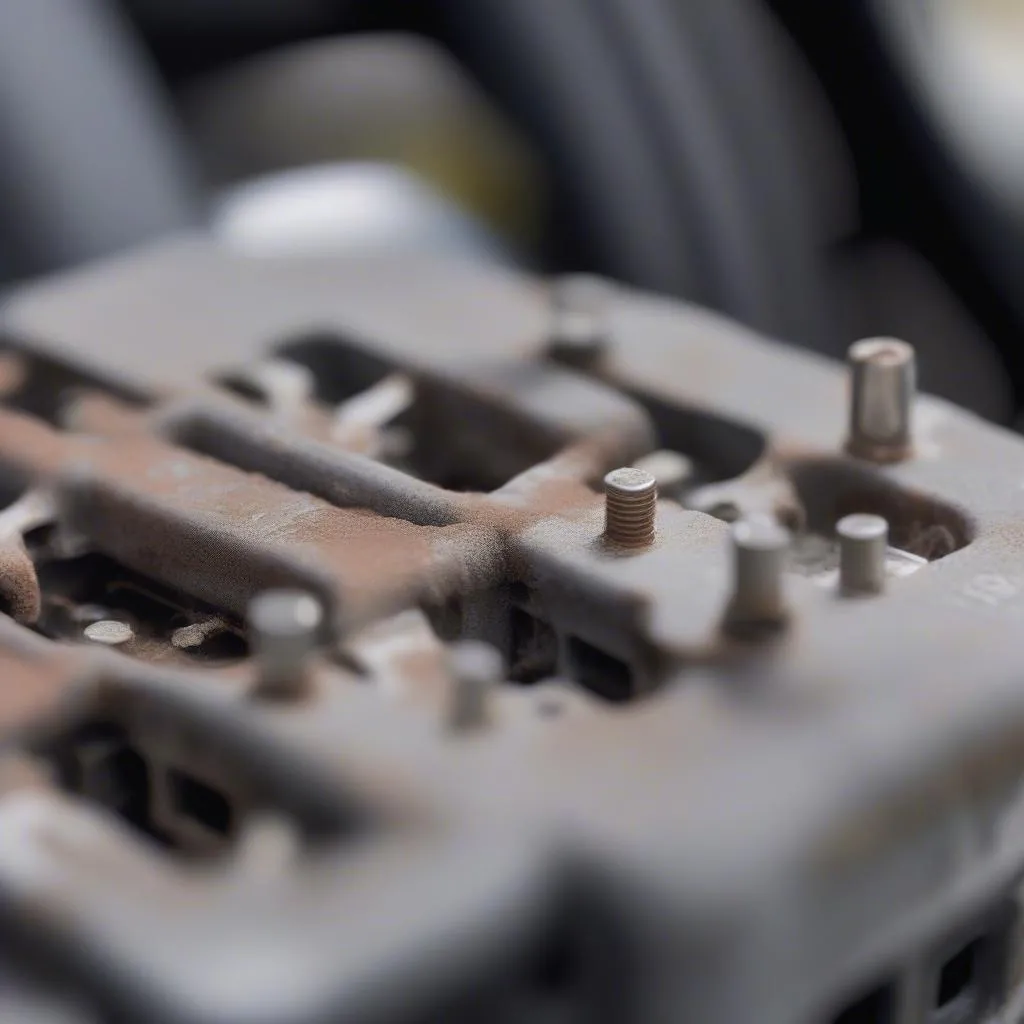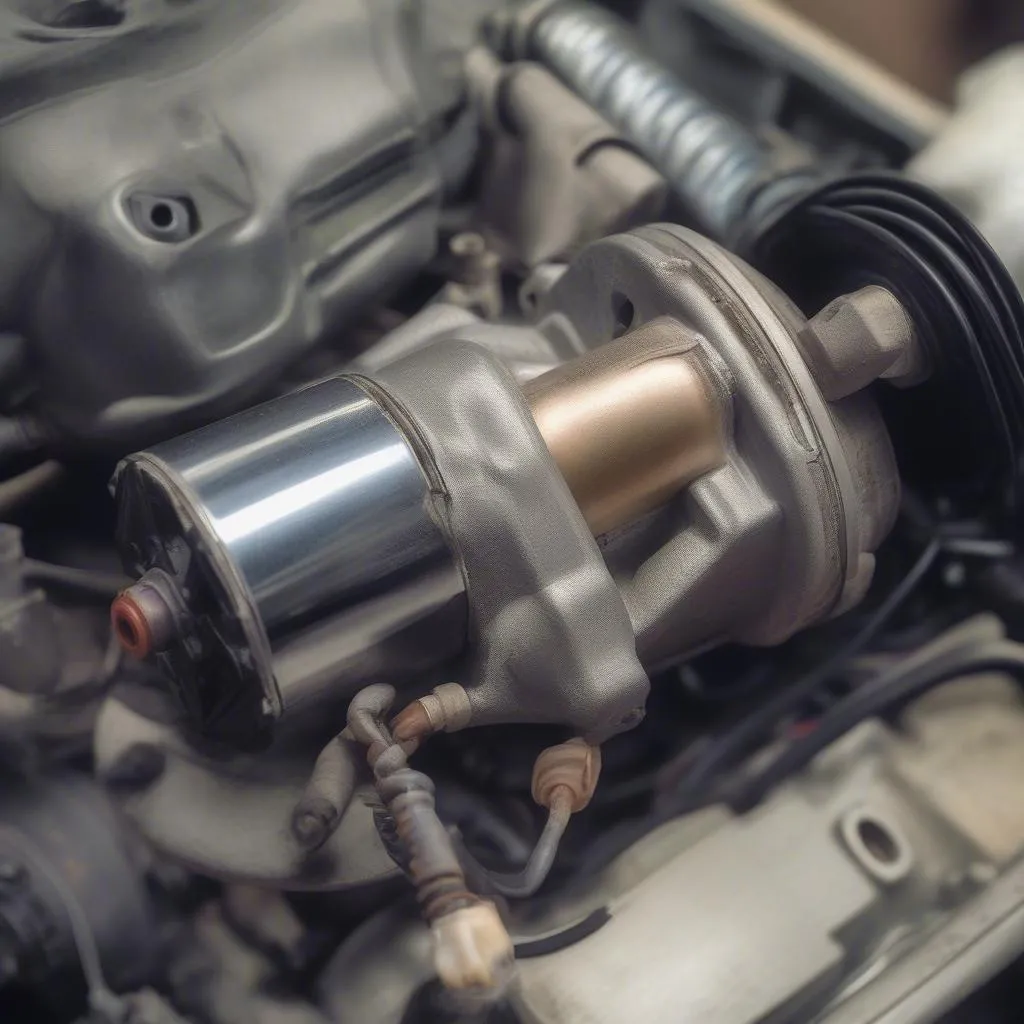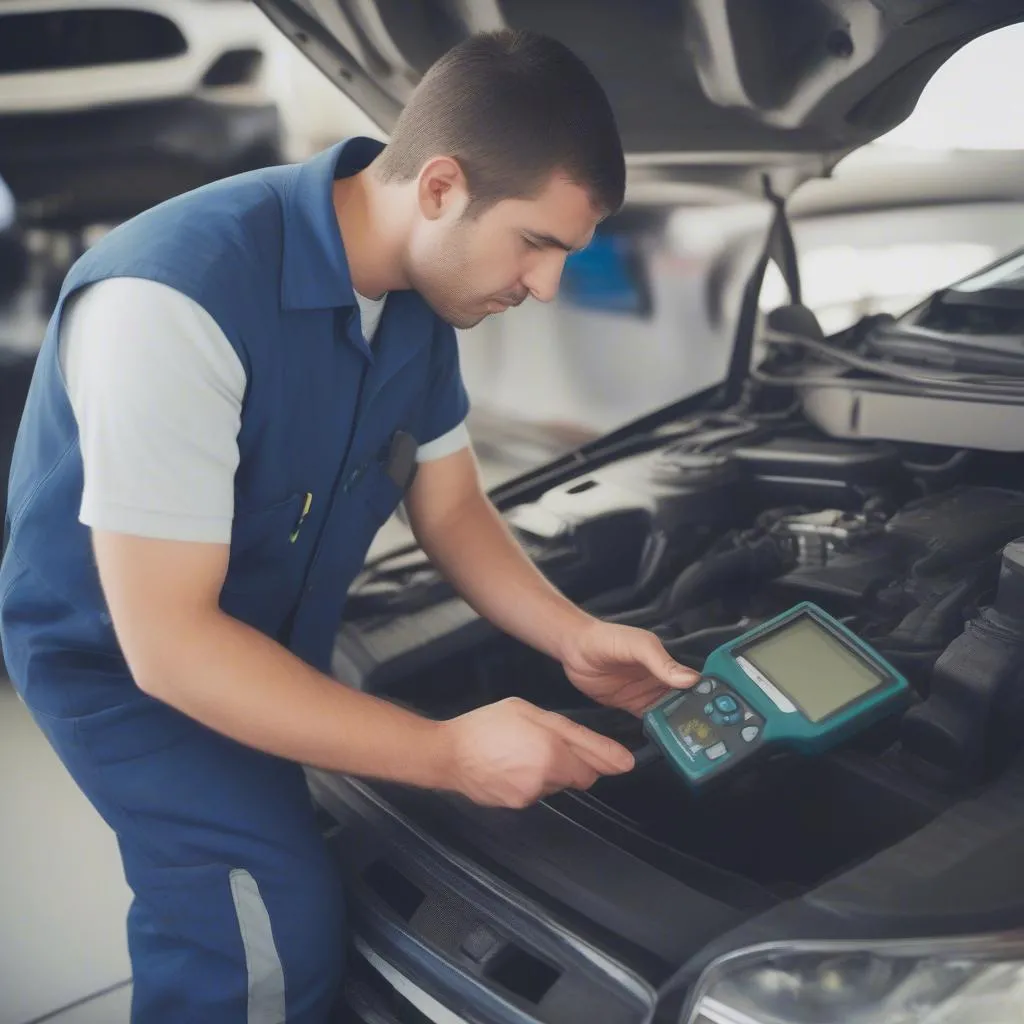Have you ever gotten into your car, turned the key, and heard nothing but silence? It’s a frustrating experience, especially when you’re in a hurry. This “no click no start” problem can be caused by a variety of factors, but luckily, it’s often a relatively simple fix. Let’s dive into the reasons why your car might not be starting and what you can do about it.
What Does “No Click No Start” Mean?
The term “no click no start” refers to a situation where you turn the ignition key or press the start button, but you don’t hear the usual starter motor click or the engine turning over. This indicates that the starter motor isn’t receiving enough power to engage.
Understanding the Problem: A Mechanic’s Perspective
Imagine you’re a mechanic working on a BMW in a bustling garage in Germany. You hear the frantic phone calls of a distressed customer: “My car won’t start! There’s no click, just silence!” The mechanic knows this issue can be traced back to the electrical system, the heart of the car’s operation. The starter motor, a critical component in the ignition system, is responsible for turning the engine over. A “no click no start” situation means the starter motor isn’t getting the electrical juice it needs to do its job. This often points to a problem with the battery, connections, starter motor itself, or the ignition switch.
The Common Culprits:
1. Dead Battery:
The most common reason for a “no click no start” is a dead battery. Think about it like a phone with no charge – it’s simply out of juice. Over time, batteries lose their capacity to hold a charge, and extreme temperatures can worsen the situation.
Common Symptoms:
- Dim headlights: A weak battery will often cause the headlights to dim, indicating a low charge.
- Slow cranking: When the battery is weak, the engine might crank slowly, struggling to turn over.
What to Do:
- Jump Start: Try jump-starting your car with a good battery and jump cables.
- Battery Test: Take your battery to an auto parts store or mechanic to have it tested. If it’s dead, you’ll need to replace it.
2. Corroded Battery Terminals:
Battery terminals are the connection points where electrical current flows in and out of the battery. Corrosion on these terminals can hinder the flow of power, preventing the starter motor from getting the energy it needs.
Common Symptoms:
- Loose connections: If the terminals are corroded, the battery cables might be loose.
- Green or white residue: Corrosion often appears as a green or white powdery substance on the terminals.
What to Do:
- Clean the Terminals: Clean the terminals using a battery terminal cleaner and a wire brush. Be sure to disconnect the battery cables before cleaning.
3. Faulty Starter Motor:
The starter motor is responsible for spinning the engine crankshaft and getting it to fire up. Over time, the starter motor can wear out or get damaged, preventing it from working correctly.
Common Symptoms:
- Clicking sound: You might hear a single clicking sound from the starter motor, indicating it’s trying to engage but failing.
- Starter motor is hot: If the starter motor is constantly trying to engage but failing, it might overheat.
What to Do:
- Check the Starter Motor: Have a mechanic inspect the starter motor to see if it’s faulty. If it is, it’ll need to be replaced.
4. Ignition Switch Problems:
The ignition switch is the control center for starting your car. Over time, the switch can wear out or get damaged, preventing the starter motor from receiving the necessary electrical signal.
Common Symptoms:
- Intermittent starting issues: The car might start sometimes but not others.
- Loose or damaged ignition switch: The ignition switch might feel loose or wobbly.
What to Do:
- Replace the Ignition Switch: If the ignition switch is faulty, it needs to be replaced.
Troubleshooting Tips
1. Check the Battery Connections:
Make sure the battery cables are firmly connected to the battery terminals. If they’re loose or corroded, clean them or tighten them up.
2. Look for Damaged Wires:
Inspect the wiring around the starter motor and ignition switch for any signs of damage or fraying. If you find any damage, you might need to repair or replace the wiring.
3. Test the Starter Motor:
If you suspect the starter motor is faulty, you can test it using a multimeter or a test light.
What Happens When the Engine Turns Over But Doesn’t Start?
If your car turns over but doesn’t start, this indicates a different issue. It means the engine is getting power, but it isn’t igniting the fuel. This could be due to problems with the ignition system, fuel system, or engine itself. We have a whole article dedicated to this issue: Car Turns Over But Won’t Fire: A Guide to Diagnosing and Fixing the Problem.
Can’t Figure It Out? Call a Professional:
If you’re not comfortable troubleshooting these issues yourself, it’s best to contact a qualified mechanic. They have the tools and expertise to diagnose and repair the problem quickly and efficiently.
Key Takeaways
- No Click No Start means the starter motor isn’t receiving enough power to engage.
- The Common Culprits: Dead Battery, Corroded Battery Terminals, Faulty Starter Motor, Ignition Switch Problems.
- Troubleshooting Tips: Check the battery connections, look for damaged wires, test the starter motor.
- If You Can’t Figure It Out: Call a professional!
Don’t let a “no click no start” problem keep you stranded. By understanding the possible causes and following these tips, you can get your car back on the road in no time.
Ready to tackle more automotive challenges? Check out these related articles:
- Why Your Car Won’t Start But Has Power
- Starter vs. Battery Problems: Knowing the Difference
- Reasons Why Your Car Won’t Start
- Car Diagnostic Scan Tools: Essential for Every Mechanic
Need help with your car’s diagnostics? We can help! Contact us on Whatsapp: +84767531508 for 24/7 support!
 Battery Terminal Corrosion
Battery Terminal Corrosion
 Starter Motor
Starter Motor
 Car Diagnostic Scan Tool
Car Diagnostic Scan Tool